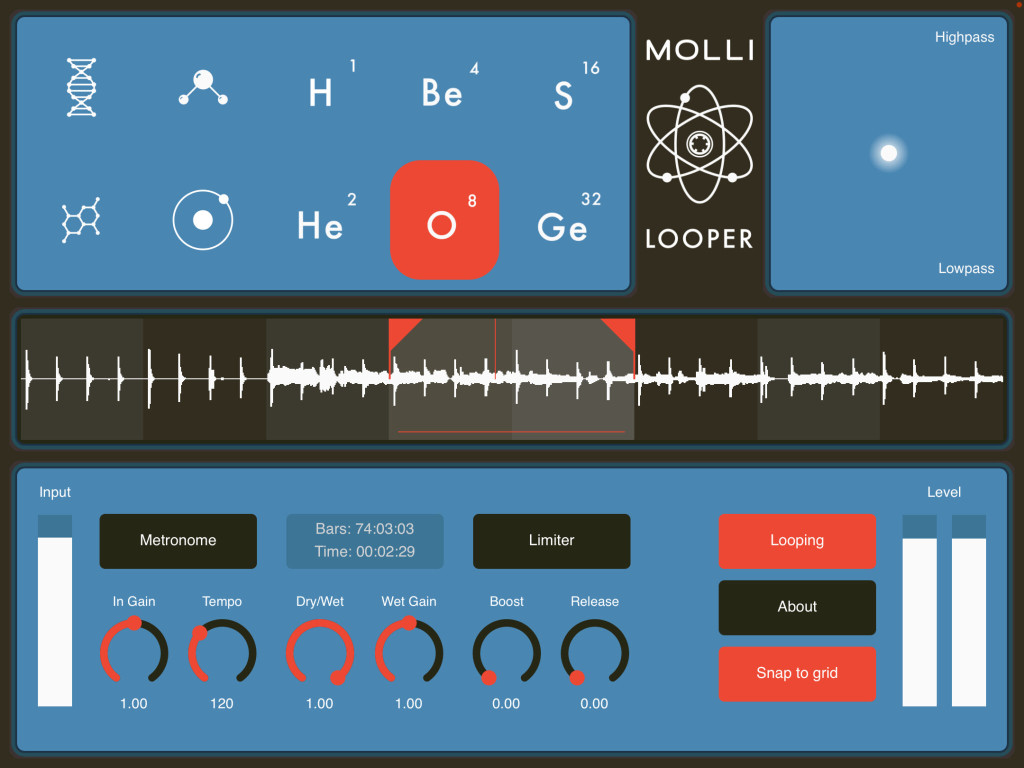Molli Looper is a new quick-looping tool you can use standalone or drop in any iOS host. It’s always on, so you can grab a recording or loop whenever inspiration strikes. And there’s synced loop playback and filtering onboard, as well.
It’s been a bumper crop of great iOS apps this spring – note Butter Synth, an excellent instrument I definitely need to catch up on!
I love this, because it solves a really simple use case. You pull up some interesting iOS synth / effect / whatever, and then you want to grab some ideas. This lets you do that easily, with everything already synced to a grid so you can drop them in your favorite looper / DAW / hardware afterwards and don’t have to line up beats.
The developers actually emphasize live performance, and it looks useful to that. It’s really simple – there’s no LoopStation-style layering – but the combination with a modeled ladder filter means you can play it like an instrument.
The app is a project of Oliver Greschke and long-time collaborator Matt Davey – so you can think of Molli Labs as the new app “sublabel” from the folks who brought you Elastic Drums, Elastic FX, and Flip Sampler.
Since this runs standalone, you can also drop this into the upcoming Logic Pro for iPadOS and – even with Logic’s latest Simpler and loop features, I think this will find some utility. It’s the advantage of plug-in architectures.
Features:

– Combination of looper and stutter/freeze effect
– Continuous recording: instant recording/looping
– Runs in sync with host clock
– Jumps to meaningful places in the recording: „Snap to grid“
– Grid: 1/32, 1/16, 1/8, 1/4, 1/2, 1, 2, 4, 8 bars
– Ability to scroll through the recording
– Lowpass/highpass resonant filter
– Long Tap XY keeps filter position
– Limiter/booster effect
– Tap on Molli icon for basic information
And some video demos, of course:
I was pondering what other nice loopers are out there. I think the best other looper for my money (and why not have both) is Bram Bos’ Gauss collab with Hainbach:
Gauss is a nice tape-style creation, whereas Molli handles digital sampling easily. But I know I’m forgetting some things, so sound off in comments.